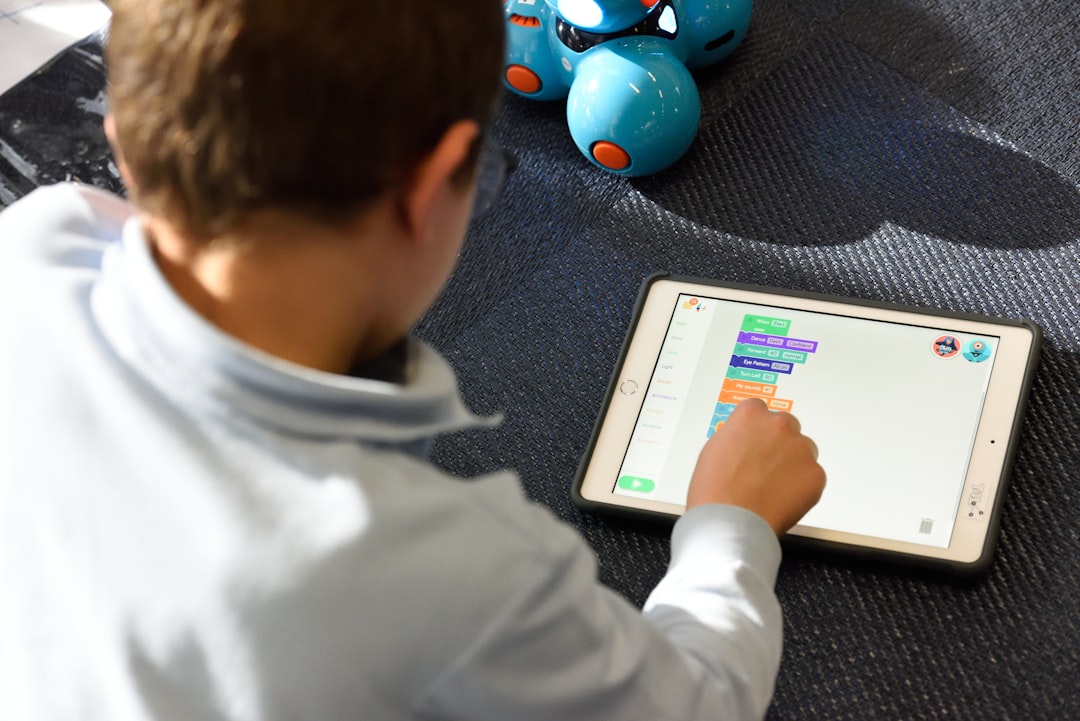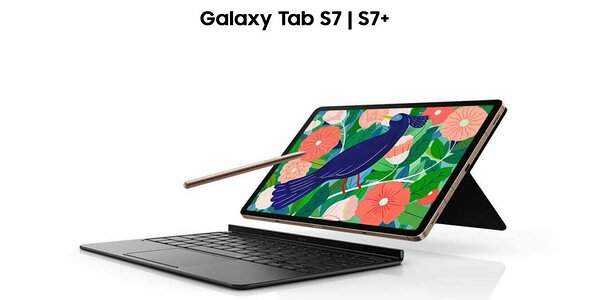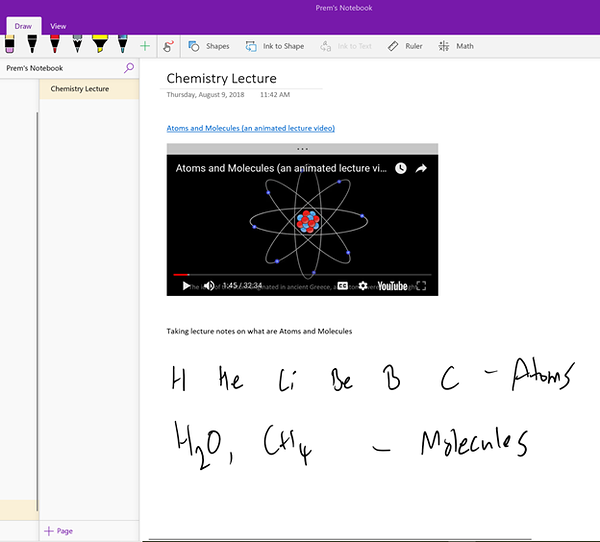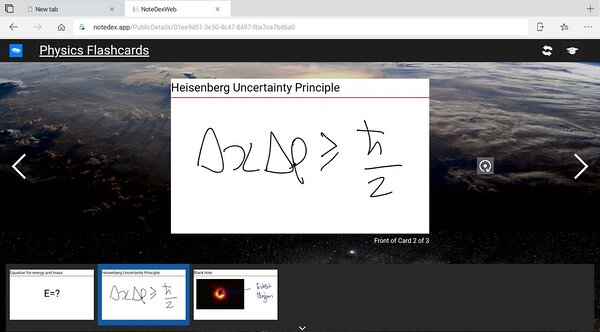 Photo from Unsplash
Photo from UnsplashOriginally Posted On: https://notedexapp.com/blog/how-to-ace-your-studies-with-handwritten-flash-cards
Welcome back to school. How are you going to make the most of your new shiny Surface, iPad or Galaxy Tablet device and study the best you can? Put down that game controller for a start!  Seriously, let’s start using the device to create your study notes and make some of your own online flashcards with a flashcard app and start learning your foreign languages, sciences, or other memory intensive subjects!
Seriously, let’s start using the device to create your study notes and make some of your own online flashcards with a flashcard app and start learning your foreign languages, sciences, or other memory intensive subjects!
This article is focused on students that are adopting ‘digital’ technologies, and I will provide a simple three step path for successful studying. If you are reading this, you have already chosen what are perhaps are the most capable and useful devices for studying — a Microsoft Surface, Apple iPad Pro with stylus or the Samsung Galaxy S7 tablet with S-Pen. It might be that you have this, or a similar tablet – or something newer! Hopefully you got the digital pen with it.
Your new tablet will allow you to use apps to take great study notes, and then sometimes the same, but usually a different, app will allow you to create your own flashcards for your study. What you will see in this article, and in other articles on our site, is that the pen you have with your tablet is great for helping in creating flashcards that you will remember, especially for complex flashcards like for learning foreign languages and sketching out foreign character symbols etc. More on this later!

Flashcards are a great way to study, and students often buy packets of ‘Index Cards’ to make paper flashcards. The idea of creating an online flashcard set is to enable you to memorize new concepts, or answers to questions, through a process of active recall, with the flashcard containing information or a concept to learn, or very often a question on the front and the answer on the back of the flashcard.
People then user some advanced study techniques and incorporate a principal of time-interval repetition for learning called spaced repetition. Flashcards are extremely popular for languages (to memorize vocabulary), medical studies, physics, chemistry – all the sciences and languages require a lot of memorization!
In order to study successfully you will want to separate:
1) STUDY CLASS LESSON NOTE TAKING
2) CREATE YOUR OWN FLASHCARDS
3)FLASHCARDS FOR STUDYING AND MEMORIZATION
1) Study Class Lesson Note Taking
In our digital world, you will want to take notes on your tablet or computer. There are many tools out there but some of the best are dependent on your device. If you have a Microsoft Surface, then Microsoft OneNote is probably the best app. On iPad good apps include Apple Notes, GoodNotes and Notability. On Samsung you can use OneNote or the built-in Samsung Notes. OneNote is available on Windows, Android, Mac and iPad so you can see your notes on all your devices. With OneNote you can take lots of lecture notes, both with your keyboard and your pen, containing text, ink, hyperlinks and even videos. And it’s free so that helps. You can even share your notes with friends.

When it comes to Flashcard creation, we think one of the best flashcard apps out there is our very own NoteDex for Desktop, Mobile and Web. It’s the only cross-platform app that you can use your pen to write your flashcards (the process of writing will aid in your studying). And you can of course use your keyboard.
This ‘transfer’ process of reviewing your notes, and creating the cards is a valuable part of the learning process.
You can also create cards with images and tables.
But in the spirit of this being a non-biased article we also want to let you know that other apps for creating flashcards include the Quizlet app (from Quizlet Inc) and Anki (various creators). These are both relatively simple apps to create simple short flashcards, and are good if you don’t want to create advanced flashcards, like you can do on NoteDex. These apps do also have a variety of study modes and give some offline access. Many people love Quizlet and Anki. Do check them out.
With the NoteDex flashcard app you can organize your flashcards into Stacks, and even in Groups within Stacks, something you can’t really do with many other note taking programs. This will help you to organize your flashcards better. And the best thing? You can make as many flash cards as you like. Unlimited flashcards (also called index cards) that look better than the real thing! Be creative, it helps learning. But keep them SIMPLE.
There is a great article on the web by Thomas Frank which I highly recommend you watch ‘8 Better Ways to Make and Study Flashcards’. One thing Thomas highlights is the power of using pictures along with the word/concept you are learning. It’s a great article — do read it!
Bring up the OneNote on one side of the tablet, and the NoteDex Flashcards Index Cards app on the other. And do use your pen — while you can create them by typing, there is a different mind-meld that occurs when you use a pen to transfer your thoughts to the (digital) paper. If you don’t have the pen, get it!!! This is why I recommend our NoteDex app – the process of creating the flashcards with your keyboard is good- but using the pen is even more mentally interactive and reinforcing (Hand to Brain wiring!). NoteDex is one of the science backed study tools out there and is one of only a few that support handwriting across all device platforms.

You might also find that you like NoteDex to take lecture notes – the app enables you to take lots of text on a flashcard. A final note on flashcards: the method is very good for learning facts and use mnemonics to really supercharge your flashcards – acronyms, coined sayings, interacting images. Think more creatively when using flashcards / index cards to capture concepts — here diagrams or descriptions in your own words might be needed to ensure you are embedding the concept in your mind. Ideal for foreign languages – for example to learn Spanish and memorize vocabulary. Watch the video below by Marty Lobdell…its worth the hour, I wish I knew some of these tips when I was at school and university!
3) Flashcards for Studying and Memorization
In order to study with flashcards you want to mix things up and not study in the same sequence all the time. In our NoteDex app you can ‘shuffle’ the flashcards — this will ensure that you are not seeing the same cards in the same sequence all the time. You can also hide certain flashcards at then of a study session – NoteDex will track which ones you need to still review – so you can study more efficiently. You can also sync your flashcards on all your phones as well as login on the Web app to edit and view online flashcards on your desktop computer browser. Plus, if your best friend asks really nicely, you can even share flashcards (just one or your whole stack) to other classmates and students so they can use and edit them — by using our unique web-share feature!
Like anything, as Thomas Frank also says, flashcards are not the only method of studying. But by using NoteDex, along with your powerful Surface, iPad or Galaxy Tablet with pen stylus you will have the best chance to incorporate the best techniques into your studies and get you test day ready.













